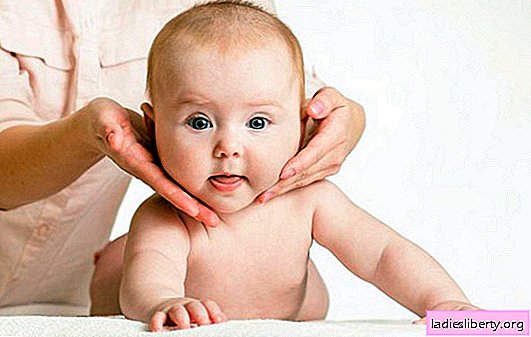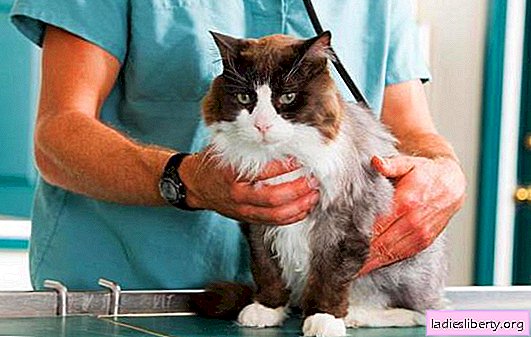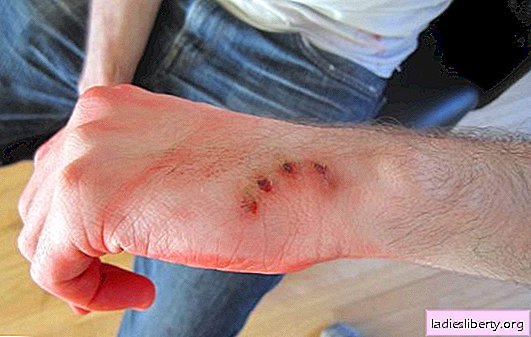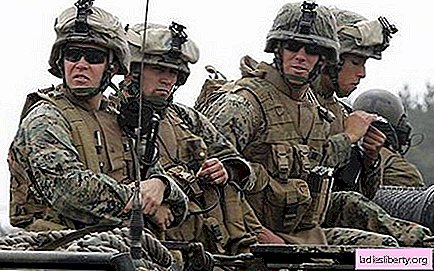
Torticollis in a newborn is a frequent phenomenon. This is not a pathology or disease, but a painful condition when the baby’s cervical muscles are deformed due to abnormalities of the intrauterine development, as a result of birth trauma, a previous illness, etc. Immediately after birth, such a deviation is rarely distinguishable and visualized closer to the end of the first month of a child’s life . The sooner parents and pediatricians notice signs of torticollis in a newborn, the faster and easier muscle deformation can be corrected.
Torticollis in a newborn: causes
There are a number of negative factors, having discovered which obstetricians warn about the likelihood of a torticollis in a newborn. The reasons most often considered are the following:
1. Severe pregnancy, prolonged pressure of the walls of the uterus on the cervical region of the fetus, as a result of which the attachment points of the sternocleidom forcibly come closer.
2. Inflammation of the sternoclavicular-mastoid muscle during fetal development, leading to the replacement of muscle fibers with fibrous tissues.
3. Natural birth complicated by buttock presentation of the fetus.
4. A difficult birth, during which the baby’s mastoid muscle is injured, and subsequently a keloid scar forms in the area of damage.
5. Mechanical impact on the baby’s head with vacuum pads or obstetric forceps during difficult labor.
6. Incorrect actions of doctors when performing cesarean section.
What's happening? Due to trauma, when replacing elastic muscle tissue with fibrous structures, the growth of the sternocleidomast slows down on the side of the injury. At the same time, the baby's head bends towards the deformed muscle, the face turns to the healthy side and rises up.
Torticollis in a newborn: causes determining the type and degree of deformation
Depending on the causes of muscle deformity, torticollis is congenital and acquired. Congenital torticollis in 90% of cases is due to hypertrophy of the mastoid muscle with its subsequent shortening.
Other types of torticollis:
1. Neurogenic. It occurs due to transferred polio or encephalitis, causing spasm and subsequent paralysis of the cervical muscles.
2. Reflex. The causes of torticollis in a newborn are jaw injury, salivary gland dysfunction, otitis media.
3. Dermatogenic. Scarring of muscle tissue as a result of thermal or mechanical external damage.
4. Traumatic. The cause of this kind of torticollis in a newborn is almost always a fracture of the spine.
5. Spastic. Due to pathological tension of the cervical muscles.
6. Osteogenic due to congenital pathology of the cervical spine.
Often, for a newborn's torticollis, hypertonicity of the neck muscles, which occurs against the background of a general overstrain of muscle structures, is taken. This condition is caused by neurological rather than orthopedic disorders. In this case, the signs of false torticollis in a newborn are manifested to a lesser extent and are easier to correct.
Torticollis in a newborn: signs that should not be missed
Congenital torticollis is early and late. Signs of the first are visible immediately after the birth of the baby. The second is clinically visualized 2-3 weeks after birth. According to the location of damage, the right-sided, left-sided and bilateral torticollis are classified.
According to the degree of curvature of the torticollis, it is light, medium and heavy. And if the signs of torticollis in a newborn of moderate and severe degrees are clearly visible, the mild form of neck muscle deformity may remain unrecognized not only by parents, but also by a pediatrician for the first 6 months of the baby’s life.
How visually and physically manifests congenital torticollis in a newborn? Signs to pay close attention to:
1. The shoulder girdle on one side is higher.
2. The head is always tilted to the shoulder.
3. The chin is raised.
4. The face is turned in the opposite direction from the damaged area.
5. Facial features are asymmetric: on the deformation side, the eyes are narrowed, located closer to the eyebrow and ear than on the healthy part of the face.
6. The sternocleidomastoid (nodding) muscle is enlarged, its contours clearly appear under the skin. Above the collarbone, on one side, a deep depression is noticeable.
7. The nape of the deformed muscle is beveled.
8. The child turns only in one direction. If you try to forcefully turn or tilt your head, the baby begins to cry.
With neurogenic torticollis, the skeletal muscle tone is increased on the one hand and lowered on the other. From the side of the lesion, the baby’s handle is compressed into a cam, the leg is bent. The mobility of the head in the cervical region is normal.
Osteogenic torticollis is visualized by a low head fit, shortening and bending of the neck in one direction, limiting head movements in the neck.
Symptoms of bilateral torticollis: the baby's head is thrown back high or tilted down, neck movements are sharply limited.
The described symptoms are not always signs of torticollis in a newborn. An accurate diagnosis is made after a comprehensive examination, radiography of the cervical spine, ultrasound examination of the muscles of the neck, consultation of a pediatrician, orthopedist, neurologist.
What to do if a torticollis in a newborn: treatment methods
Corrective measures begin from the moment of diagnosis "torticollis". The sooner the treatment is done, the better. Therapy is conservative in most cases.
Congenital muscle torticollis is corrected by massage courses, physiotherapy (UHF, electrophoresis, paraffin baths), therapeutic exercises, swimming. In some cases, it is recommended to stretch the Glisson loop, wearing a Shants collar, cervical orthosis. In the absence of a positive result, surgical correction techniques are used.
Therapy of neurogenic torticollis involves a course of taking medications, general and local therapeutic massage procedures. Pharmacological treatment is aimed at reducing muscle tone and lowering the excitability of the nervous system.
Treatment of congenital osteoarticular torticollis consists in a phased corrective immobilization of the cervical spine. The duration of the course and the means used to immobilize the neck depend on the severity of the deformity and the age of the patient. If it is not possible to correct the subluxation by external influence, the operation is performed by spinal fusion, the purpose of which is to merge and immobilize the vertebrae adjacent to the damaged ones.
Dermatogenic torticollis needs surgical correction methods - scalpel excision of scar tissue with subsequent skin grafting.
If a torticollis in a newborn, what should parents do
The most effective methods of treating this condition are massage, gymnastics, and swimming. The child takes the main course with specialists. Similar procedures can be carried out at home, after consulting a doctor.
Massage with crankshaft is aimed at relaxing the neck muscles. The simplest methods of therapeutic massage mom can perform independently:
· Easy (without pressure) leads of the baby’s head to one side, then to the other side;
· Delicate stroking of the neck from ear to collarbone with your fingers;
· Soft rubbing of the skin over the area of damage to the sternocleidomastoid muscle.
Massage from the side of a healthy muscle, aimed at increasing muscle tone, is performed simultaneously. At the same time, the movements are repeated, but with more pressure and more energetic.
It is important to know not only what to do if a torticoll is in a newborn, but also how to properly hold a baby with such a diagnosis in her arms. This is also a kind of massage and therapeutic exercises that help the neck muscles to take a normal position.
The child is taken up in his arms "column" facing him. The shoulders of the baby at the level of the shoulders of the parent. The crumbs head is smoothly, very gently turned towards the damaged muscle and pressed with its cheek. In the same way, the baby is carried in a column with its back to itself. The head is supported by hand, rotated and slightly tilted to the sore side, fixing the preset position with your cheek.
If a torticollis in a newborn, what should parents do besides this? One of the auxiliary correction measures carried out at home is posture treatment.
The basic rules are as follows:
1. The baby is placed on a semi-rigid mattress without a pillow.
2. Rise at the head of the bed - up to 20 degrees, for which a diaper folded several times is placed under the mattress.
3. The baby’s body position is straight, strictly symmetrical to the head.
4. On the part of the damaged muscle are objects that can interest and attract the attention of the child, prompting him to turn his head. It can be a source of light or sound, toys, colorful pictures, etc. You need to approach the baby from the same side.
5. With crank, it is useful if the baby sleeps on its side. At the same time, from the side of the torticollis, a roller (high pillow) is placed under the baby's head. If the child lies on the side of the healthy side, the pillow is removed.
The daily gymnastics that mothers learn from the first days of the baby’s life should be supplemented with crank movements with movements that develop the neck muscles.
The lesson includes:
· Circular head movements with fixed shoulders;
· Tilting the head from side to side, back and forth;
· Raising the head in a position on the side;
· Raising the head of the child, hanging from the edge of the table.
A very effective exercise for crankshaft in a newborn is to grab a child lying on his back by the arms and slowly pull it toward you as if you want to put him in it. But this exercise must be performed with extreme caution. Any wrong adult action can harm the baby.
Is it possible to reassure and reassure parents of a positive outcome if the child is diagnosed with torticollis? Of course. In most cases, the problem is not so serious that it requires complex treatment to resolve it. The main thing is to notice the signs of torticollis in time and immediately begin corrective therapy procedures. And not independently, but only after consultation with doctors and under the guidance of specialists with a medical education.











